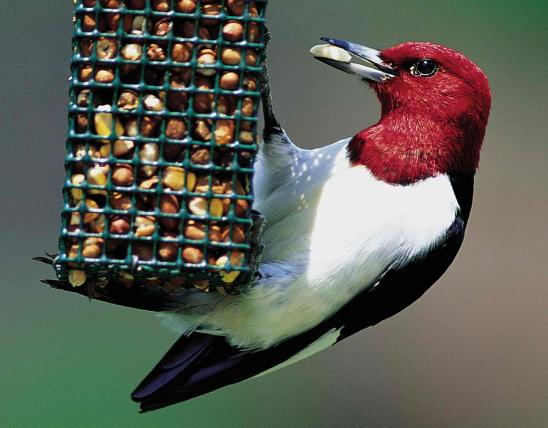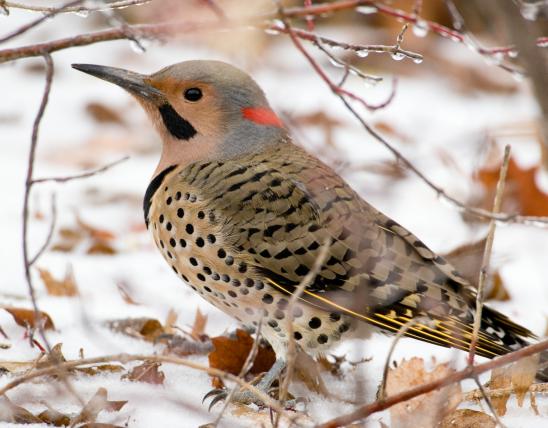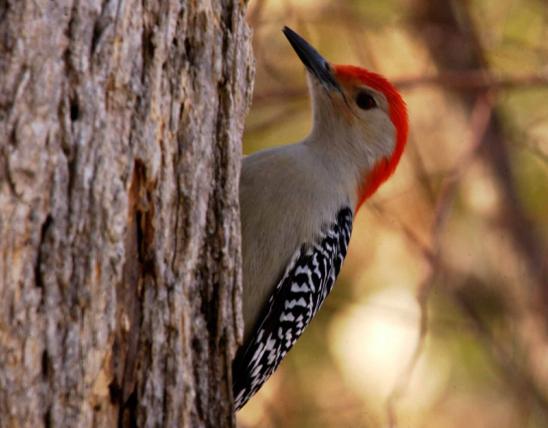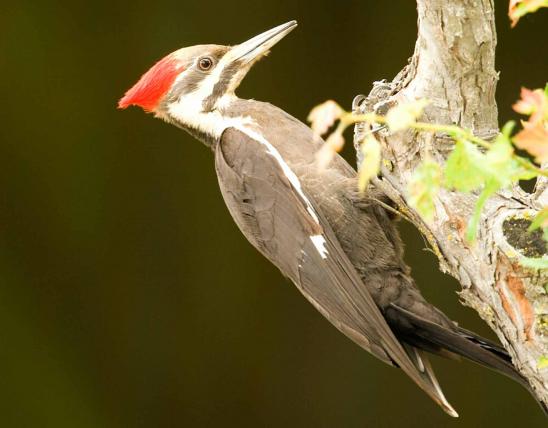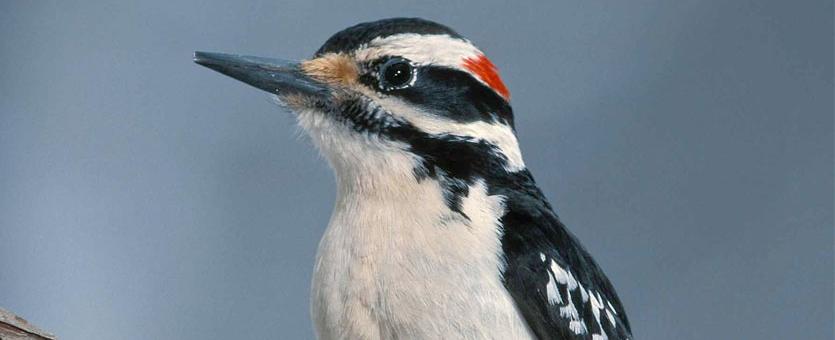
Hairy woodpecker adults have black-and-white upperparts, with streaks and spots similar to the downy woodpecker. Underparts are white, although young birds may be dingy white. Males have red on the nape in the adult and reddish crowns in immature birds. Females lack the red nape. Tail is black with white outer tail feathers — there are no spots or bars present on the white outer tail feathers. The bill of the hairy woodpecker extends well beyond the bristly feathers at the base of the bill and is about as long as the head from the bill to the nape. Voice is a dry, monotone whinny and a loud, sharp peek call.
Similar species: The downy woodpecker is easily confused with the hairy but is noticeably smaller (6¾ inches tip of bill to tip of tail, versus 9¼ for the hairy), and its bill is much shorter. Also, the outer tail feathers on a downy have black spots or bars, while the hairy’s are all white. The yellow-bellied sapsucker is more intricately patterned, with a barred, patterned back, while the hairy has a large white patch on the back.
Length: 9¼ inches (tip of bill to tip of tail).
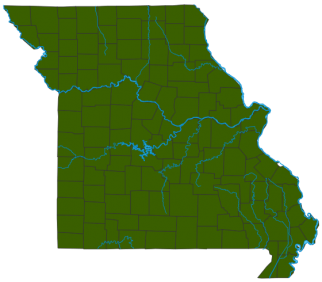
Statewide.
Habitat and Conservation
Like downy woodpeckers, hairy woodpeckers live in forests, woodlands, parks, and orchards. They frequent more extensive forests during the breeding season than downy woodpeckers. Many people see them at backyard bird feeders.
Food
Forages in trees for bark insects, seeds, fruits, and sap. Like downy woodpeckers, they are attracted to bird feeders with sunflower seeds and suet. Hairy and downy woodpeckers are very similar, are closely related, eat the same kinds of foods, and often occur in the same areas. Competition, however, is not a big problem with the two, as the larger hairy woodpecker forages on trunks and large branches, while the smaller downy specializes in smaller branches.
Status
Uncommon permanent resident.
Life Cycle
Hairy woodpeckers excavate nest cavities into dead tree trunks or dead portions of living trees. About 2 weeks later, they typically have 3–6 eggs, which they incubate 11–12 days before hatching. Then, for nearly a month, the parents bring food for the chicks, until they are ready to leave the nest. There is only one brood (or nesting attempt) a year. In addition to feeding their hungry chicks, the parents must guard against starlings and other birds that may try to take over the cavity for their own brood, and against snakes and other predators that may try to eat their eggs and chicks.
Human Connections
Woodpeckers are fun to watch on snowy winter days when they visit backyard birdfeeders. As they eat suet, peanut butter, and sunflower seeds, you will find yourself “rooting for” the woodpeckers whenever a bunch of starlings swoops in and tries to bully them away from the goodies!
Ecosystem Connections
Hairy woodpeckers and their relatives help control populations of tree pests, such as bark beetles, so they do a great service for trees and forests. The nest holes they create in dead trees are often used later by other birds such as bluebirds, wrens, and chickadees, as well as by flying squirrels.
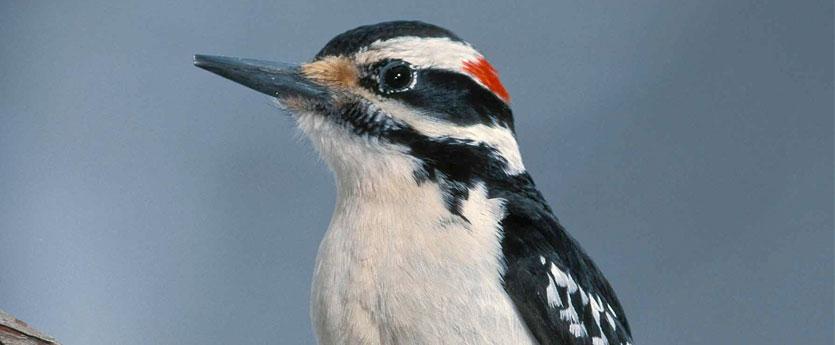
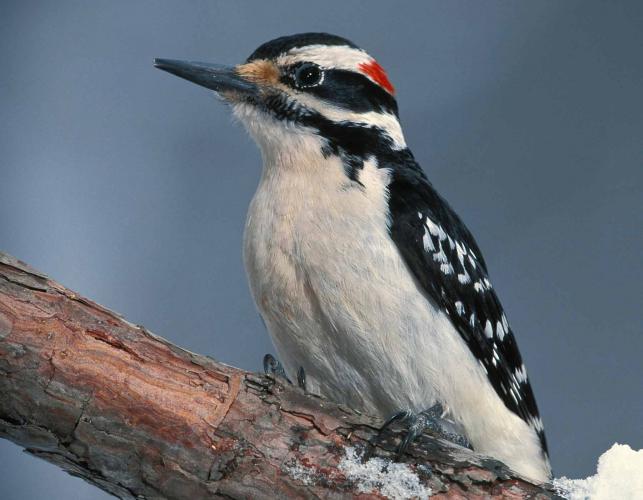

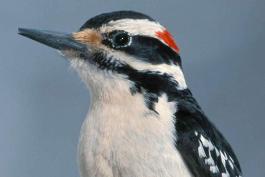
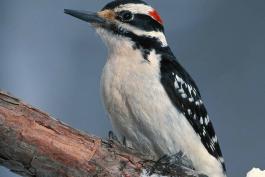
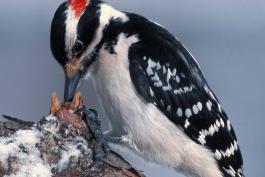
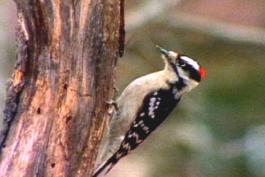
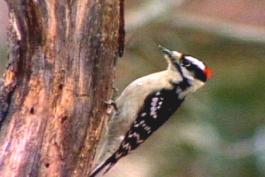
About 350 species of birds are likely to be seen in Missouri, though nearly 400 have been recorded within our borders. Most people know a bird when they see one — it has feathers, wings, and a bill. Birds are warm-blooded, and most species can fly. Many migrate hundreds or thousands of miles. Birds lay hard-shelled eggs (often in a nest), and the parents care for the young. Many communicate with songs and calls.
























